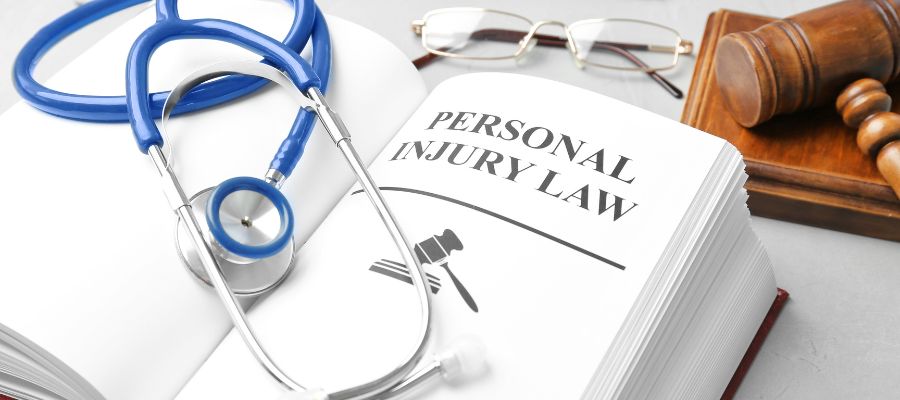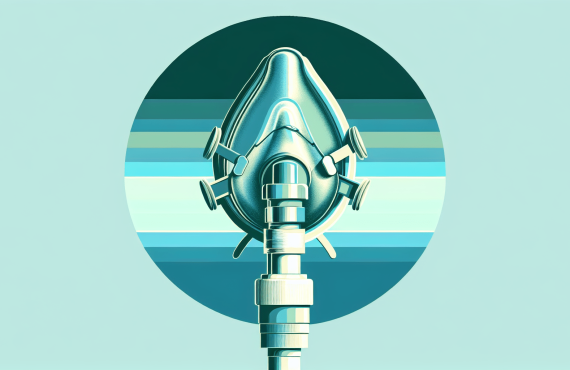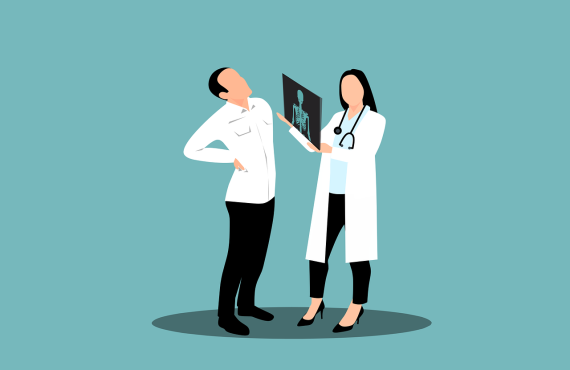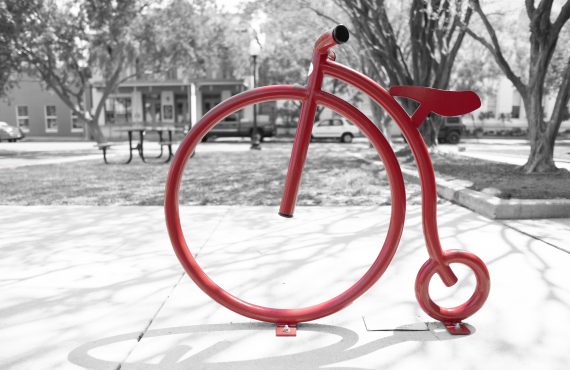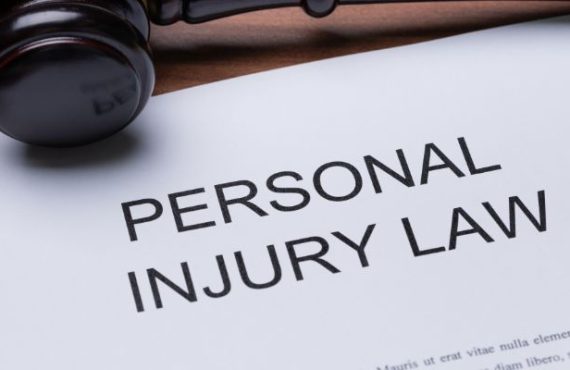Welcome to this article on understanding the legal aspects of personal injury insurance in Pensacola. In the following paragraphs, you will learn about the importance of personal injury insurance, the legal requirements for such insurance in Pensacola, and what it covers. By the end of this article, you will have a clearer understanding of how personal injury insurance works in Pensacola and how it can protect you in case of an accident.
Personal injury insurance is crucial for anyone living in Pensacola, as it provides financial protection in the event of an accident or injury. In Pensacola, it is a legal requirement for all drivers to have at least a minimum amount of personal injury protection (PIP) insurance. This insurance covers medical expenses, lost wages, and other related costs resulting from a car accident, regardless of who is at fault. It is important to familiarize yourself with the legal requirements and make sure you have adequate coverage to protect yourself and your loved ones in case of any unfortunate incidents.

This image is property of images.unsplash.com.
Table of Contents
Understanding Personal Injury Insurance
What is personal injury insurance?
Personal injury insurance is a type of insurance coverage that provides financial protection to individuals who have suffered injuries as a result of someone else’s negligence or wrongdoing. This insurance is specifically designed to cover medical expenses, lost wages, pain and suffering, and other damages incurred due to the accident or injury.
Why is personal injury insurance important?
Personal injury insurance is important because it provides individuals with the peace of mind that they will be financially protected in the event of an accident or injury. Without this coverage, individuals would have to bear the burdensome costs of medical bills, rehabilitation expenses, and lost wages on their own. personal injury insurance ensures that victims are not left financially devastated and can focus on their recovery instead.
Types of personal injury insurance coverage
There are several types of personal injury insurance coverage available that individuals can choose from based on their specific needs. Some common types of coverage include:
-
Medical Payments Coverage: This coverage pays for medical expenses related to the accident or injury, regardless of who was at fault. It typically covers expenses such as doctor visits, hospital stays, surgeries, medications, and rehabilitation costs.
-
Lost Wages Coverage: This coverage provides compensation for the income lost due to the accident or injury. It helps victims maintain financial stability while they are unable to work or earn a living.
-
Pain and Suffering Coverage: This coverage compensates victims for the physical and emotional pain and suffering they experienced as a result of the accident or injury. It is designed to provide additional financial support beyond medical and lost wages coverage.
-
Property Damage Coverage: This coverage pays for the repair or replacement of damaged property, such as vehicles, caused by the accident or injury.
-
Legal Expenses Coverage: This coverage helps cover the costs associated with legal representation and litigation in personal injury cases. It ensures that individuals have access to experienced attorneys who can help them navigate the legal process effectively.
The Legal System and Personal Injury
Overview of the legal system in Pensacola
Pensacola, located in the westernmost part of the Florida Panhandle, operates within the legal framework of the state of Florida. The legal system in Pensacola, like many other jurisdictions in the United States, follows a common law system that is heavily influenced by statutory laws, legal precedents, and court decisions.
How personal injury cases are handled legally
Personal injury cases in Pensacola are typically handled through civil litigation. When an individual is injured due to someone else’s negligence, they have the right to seek compensation through the legal system. The injured party, known as the plaintiff, initiates a lawsuit against the responsible party, known as the defendant.
The legal process begins with filing a complaint, which outlines the details of the accident or injury, the damages suffered, and the legal basis for seeking compensation. The defendant is then served with the complaint and has an opportunity to respond. From there, the case progresses through various stages, including discovery, settlement negotiations, and, if necessary, trial.
Role of attorneys in personal injury cases
Attorneys play a crucial role in personal injury cases by providing legal representation and guidance to the injured party. They are well-versed in personal injury laws, and their expertise helps plaintiffs navigate the complex legal system.
Attorneys have the knowledge and skills to build a strong case by gathering evidence, interviewing witnesses, and assessing liability. They also negotiate with insurance companies and defendants to secure fair compensation for their clients. In addition to legal representation, attorneys provide emotional support and guidance to their clients throughout the legal process, ensuring their rights and interests are protected.
Compensation and Damages
Different types of compensation in personal injury cases
In personal injury cases, victims may be entitled to various types of compensation, depending on the circumstances of the accident or injury. Some common types of compensation include:
-
Medical Expenses: This includes reimbursement for medical bills, hospital stays, surgeries, medications, physical therapy, and other healthcare expenses incurred as a result of the accident or injury.
-
Lost Wages: Compensation for the income lost due to the inability to work or perform job duties as a result of the accident or injury.
-
Pain and Suffering: This form of compensation is awarded for the physical and emotional pain and suffering endured by the victim. It takes into account the severity and long-term impact of the injury.
-
Loss of Consortium: If the accident or injury has resulted in a loss of companionship or ability to maintain a normal relationship with a spouse or family member, the victim may be entitled to compensation for loss of consortium.
Factors considered when determining damages
When determining the amount of compensation in a personal injury case, several key factors are taken into consideration:
-
Medical Expenses: The severity and extent of the injuries, the cost of medical treatment, and the estimated future medical expenses are all considered.
-
Lost Wages: The victim’s pre-accident income, the length of time they are unable to work, and their potential future earning capacity are evaluated.
-
Pain and Suffering: The impact of the injuries on the victim’s quality of life, the duration and intensity of pain suffered, and any emotional distress experienced are assessed.
-
Loss of Consortium: The impact of the accident or injury on the victim’s ability to maintain a normal relationship with a spouse or family member is taken into account.
Calculating and claiming compensation
Calculating and claiming compensation in a personal injury case can be complex, as it requires a detailed analysis of various factors. To ensure a fair and accurate calculation, it is advisable to consult with an experienced personal injury attorney who can accurately assess the value of the claim.
To claim compensation, the victim must file a personal injury lawsuit or insurance claim against the responsible party. The claim should include all relevant documentation, such as medical records, bills, proof of lost wages, and any other evidence supporting the damages claimed. A skilled attorney can help guide victims through this process and ensure that they receive the compensation they deserve.
Liability in Personal Injury Cases
Proving liability in personal injury cases
In personal injury cases, the burden of proof lies with the injured party, known as the plaintiff. To prove liability, the plaintiff must establish the following four elements:
-
Duty of Care: The plaintiff must show that the defendant owed them a duty of care. This means that the defendant had a legal obligation to act reasonably and avoid causing harm to others.
-
Breach of Duty: The plaintiff must demonstrate that the defendant breached their duty of care by acting negligently or recklessly. This involves showing that the defendant’s actions, or lack thereof, fell below the standard of care expected in similar circumstances.
-
Causation: The plaintiff must establish a causal link between the defendant’s breach of duty and the injuries suffered. This requires demonstrating that the defendant’s actions directly caused the accident or injury.
-
Damages: Finally, the plaintiff must provide evidence of the damages suffered as a result of the accident or injury. This includes physical injuries, financial losses, and emotional distress.
Types of liability in different situations
Liability in personal injury cases can arise in various situations, including:
-
Motor Vehicle Accidents: Drivers have a duty to operate their vehicles safely and adhere to traffic laws. If a driver’s negligence causes an accident resulting in injuries, they may be held liable.
-
Premises Liability: Property owners have a duty to maintain safe conditions on their premises. If someone is injured due to a hazardous condition, such as a wet floor or faulty staircase, the property owner may be held liable.
-
Products Liability: Manufacturers have a duty to produce safe products. If a defective product causes injury, the manufacturer may be held liable for damages.
-
Medical Malpractice: Healthcare professionals have a duty to provide a certain standard of care. If a healthcare provider’s negligence results in harm to a patient, they may be held liable for medical malpractice.
Contributory negligence and its impact on liability
In some personal injury cases, both the plaintiff and the defendant may be partially responsible for the accident or injury. This is known as contributory negligence. Under contributory negligence laws, if the plaintiff is found to be even slightly at fault, it can bar them from recovering any compensation.
However, Florida follows a comparative negligence system, which allows the injured party to seek compensation even if they are partially responsible for the accident. The amount of compensation awarded is reduced proportionally to the plaintiff’s percentage of fault. For example, if the plaintiff is found to be 20% at fault, their compensation would be reduced by 20%.

This image is property of images.unsplash.com.
Statute of Limitations
Understanding the time limits for filing personal injury claims
In Pensacola, as well as throughout Florida, personal injury claims are subject to a statute of limitations, which is a time limit within which a lawsuit must be filed. This time limit varies depending on the type of personal injury case, but in most cases, it is four years from the date of the accident or injury.
Exceptions and extensions to the statute of limitations
There are certain exceptions and extensions to the statute of limitations that may apply in personal injury cases. These exceptions include:
-
Discovery Rule: If the injury or its cause is not immediately apparent, the statute of limitations may be extended. The clock starts ticking from the date the injury or cause was discovered or should have been discovered with reasonable diligence.
-
Minor Children: The statute of limitations for personal injury cases involving minor children is typically extended until they reach the age of 18.
-
Government Entities: When filing a personal injury claim against a government entity, such as a city or state agency, specific notice requirements and deadlines may apply.
-
Fraudulent Concealment: If the defendant intentionally conceals or fraudulently misrepresents information related to the injury, the statute of limitations may be paused or extended.
Consequences of missing the deadline
Failing to file a personal injury claim within the statute of limitations can have severe consequences. Once the deadline has passed, the injured party loses the right to seek compensation through the legal system. It is crucial to be aware of the time limitations and take timely action to protect your rights.
Claims Process and Documentation
Steps involved in filing a personal injury claim
The process of filing a personal injury claim involves the following steps:
-
Seek Medical Attention: The first step is to seek immediate medical attention for your injuries. This not only ensures your well-being but also establishes a medical record that can serve as evidence in your claim.
-
Consult with an Attorney: It is advisable to consult with an experienced personal injury attorney who can assess the strength of your case, provide legal guidance, and handle the entire claims process on your behalf.
-
Investigation and Evidence Gathering: Your attorney will investigate the accident, collect evidence, interview witnesses, and build a strong case to establish liability and claim damages.
-
Preparation of Settlement Demand: Your attorney will prepare a detailed settlement demand that outlines the damages you are seeking and supports your claim with evidence.
-
Negotiations with Insurance Companies: Your attorney will engage in negotiations with the insurance companies involved to seek a fair settlement on your behalf. They will advocate for your rights and ensure you are not taken advantage of.
-
Settlement or Litigation: If a fair settlement cannot be reached, your attorney may advise you to proceed with litigation. They will represent you in court and fight to secure the compensation you deserve.
Importance of gathering and preserving evidence
Gathering and preserving evidence is essential in a personal injury claim, as it helps establish liability and strengthen your case. Key pieces of evidence include:
-
Photographs: Take photographs of the accident scene, injuries, damaged property, and anything else that is relevant to the case.
-
Witness Statements: Collect statements from witnesses who saw the accident or can attest to the conditions that contributed to the accident or injury.
-
Medical Records: Keep a record of all medical treatments, prescriptions, diagnoses, and any other documentation related to your injuries and treatment.
-
Police Reports: If the accident involved law enforcement, obtain a copy of the police report, as it can provide valuable information.
Documents required for a successful claim
To support your personal injury claim, it is important to gather and organize the following documents:
-
Accident Report: If applicable, obtain a copy of the accident report filed by the police or other authorities.
-
Medical Records and Bills: Collect all medical records, bills, and receipts related to your injuries and treatment.
-
Employment Records: If you have lost wages as a result of the accident, provide documentation such as pay stubs, tax returns, or a letter from your employer.
-
Insurance Policies: Provide copies of relevant insurance policies, including personal injury coverage or any policies that might be implicated in the case.
-
Proof of Expenses: Keep records of any out-of-pocket expenses related to the accident, such as transportation costs to medical appointments or the cost of necessary medical equipment.
Having these documents organized and readily available will help streamline the claims process and strengthen your case.
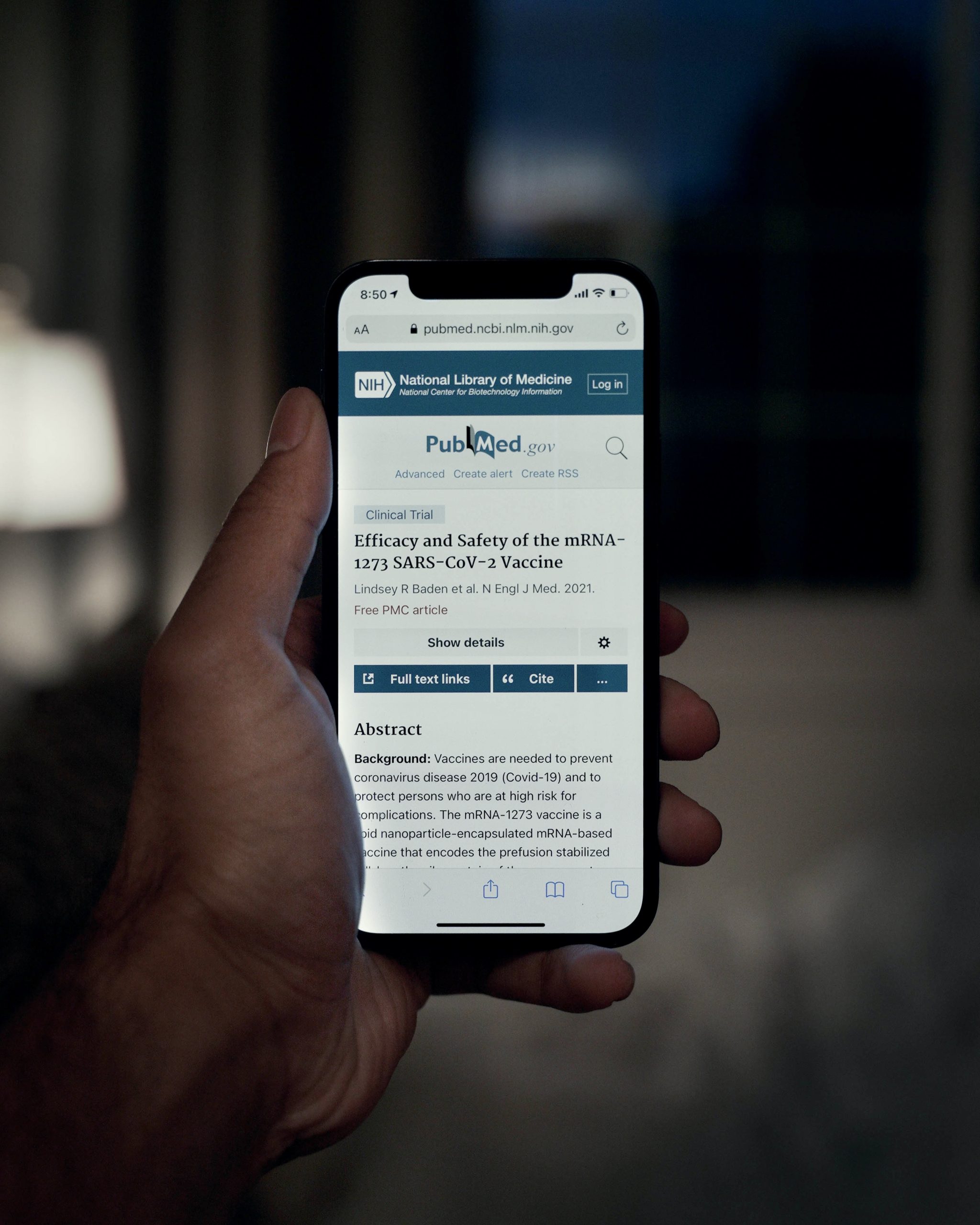
This image is property of images.unsplash.com.
Negotiating Settlements
When and how settlements are negotiated
Settlement negotiations in personal injury cases typically occur once the injured party has reached a point of maximum medical improvement, meaning they have recovered as much as possible or their condition has stabilized. At this stage, both parties can assess the extent of the injuries and evaluate the long-term impact.
Settlement negotiations are usually conducted through attorneys representing the injured party and the defendant or their insurance company. The attorneys exchange information, present their respective arguments and evidence, and engage in discussions to reach a mutually acceptable settlement amount.
Factors influencing settlement amounts
Several factors can influence the amount of a settlement in a personal injury case, including:
-
Severity of Injuries: The extent and severity of the injuries sustained by the victim play a significant role in determining the settlement amount. More severe injuries typically result in higher settlements.
-
Medical Expenses: The total cost of medical treatment, including future medical expenses, is taken into consideration when determining the settlement amount.
-
Lost Wages: The impact of the injuries on the victim’s ability to work and earn a living, including both past and future lost wages, is factored into the settlement amount.
-
Pain and Suffering: The physical and emotional pain and suffering endured by the victim, as well as any long-term effects on their quality of life, are considered.
-
Economic Factors: Economic factors, such as the defendant’s insurance policy limits and the financial resources of the parties involved, can impact the settlement amount.
Negotiation tactics and strategies
Negotiating a fair settlement requires careful planning and strategic tactics. Some common negotiation tactics utilized by attorneys in personal injury cases include:
-
Preparing a Strong Case: Thoroughly investigating and preparing a strong case with compelling evidence and legal arguments helps establish credibility and leverage during negotiations.
-
Knowing the Case Value: Accurately determining the value of the claim based on factors such as medical bills, lost wages, and the impact of the injuries is essential for effective negotiation.
-
Presenting a Persuasive Demand: Preparing a detailed settlement demand that clearly outlines the damages suffered, supported by strong evidence, can prompt the opposing party to take the claim seriously.
-
Making Strategic Concessions: Offering strategic concessions, such as lowering the initial settlement demand or compromising on certain aspects of the claim, can help facilitate negotiations and reach a mutually acceptable settlement.
-
Staying Calm and Composed: Maintaining a professional and composed demeanor during negotiations can help build credibility and establish a collaborative atmosphere, which can lead to more favorable settlement outcomes.
Trial and Litigation
When personal injury cases go to trial
Not all personal injury cases go to trial. In fact, the majority of cases are settled before reaching the trial stage. However, if a fair settlement cannot be reached through negotiations or mediation, the case may proceed to trial.
Personal injury cases that go to trial are typically more complex or contentious, with significant disagreement between the parties involved regarding liability or damages. In such cases, a judge or jury will be responsible for making a final determination on the issues at hand.
The litigation process explained
The litigation process in a personal injury case involves several stages:
-
Filing the Complaint: The plaintiff initiates the lawsuit by filing a complaint with the appropriate court, outlining the key details of the accident or injury, the damages suffered, and the legal basis for seeking compensation.
-
Discovery: Both parties exchange information and evidence through a process known as discovery. This includes gathering documents, conducting depositions, and interviewing witnesses.
-
Pre-trial Motions: Attorneys may file pre-trial motions to resolve certain legal issues before the trial, such as requests for summary judgment or the exclusion of certain evidence.
-
Trial: The trial begins with jury selection, followed by opening statements, presentation of evidence, witness testimony, closing arguments, and jury deliberation. The judge or jury then renders a verdict.
-
Post-trial Motions and Appeals: After the trial, attorneys may file post-trial motions to request a new trial or to challenge the verdict. If either party believes there were legal errors during the trial, they may file an appeal to a higher court.
Role of juries in personal injury trials
In personal injury trials, juries play a crucial role in the legal process. Juries are responsible for determining the facts of the case based on the evidence presented and applying the law as instructed by the judge. They listen to witness testimony, review documentary evidence, and deliberate as a group to reach a verdict.
Juries are selected from a pool of potential jurors through a process known as voir dire. The attorneys for both parties have the opportunity to question potential jurors to ensure that they can be fair and impartial.
The decision reached by the jury is typically binding and determines the outcome of the case. However, it is important to note that either party may have the right to appeal the verdict if they believe legal errors occurred during the trial.
Appeals and Disputes
Understanding the appeals process
If either party is dissatisfied with the outcome of a personal injury trial, they may have the right to file an appeal. The appeals process involves seeking a review of the trial court’s decision by a higher court, known as an appellate court.
During the appeals process, the appellate court reviews the lower court’s record, including the transcripts, exhibits, and written legal arguments. The appellate court does not conduct a new trial or hear witness testimony. Instead, it focuses on determining whether legal errors occurred during the trial that may have affected the outcome.
The appellate court has the authority to affirm the lower court’s decision, overturn it, or remand the case back to the lower court for further proceedings.
Resolving disputes in personal injury cases
disputes in personal injury cases can arise at various stages of the legal process. Often, disputes can be resolved through negotiations or alternative dispute resolution methods such as mediation or arbitration.
Mediation involves a neutral third party, known as a mediator, who facilitates communication between the parties and helps them reach a mutually acceptable settlement. Mediation is a non-binding process, meaning that the parties are not required to reach an agreement.
Arbitration, on the other hand, involves a neutral third party, known as an arbitrator, who acts as a private judge and makes a binding decision on the case. Arbitration can be a more expedited and cost-effective alternative to a trial, as the rules of evidence and procedure are often more relaxed.
Both mediation and arbitration can provide an opportunity for the parties to reach a resolution while avoiding the time and expense associated with a trial.
Conclusion
Understanding the legal aspects of personal injury insurance is crucial for anyone living in Pensacola or any other city. Being aware of the different types of personal injury insurance coverage available, the role of attorneys in personal injury cases, and the factors considered when determining damages can help individuals protect their rights and interests in the event of a personal injury.
It is important to remember that seeking professional guidance and support from experienced personal injury attorneys is crucial when navigating the legal system. They can help individuals understand their rights, assess the value of their claims, and advocate for fair compensation.
By understanding the legal aspects of personal injury insurance and the process of filing a personal injury claim, individuals can ensure they are well-prepared and protected in the event of an accident or injury.


